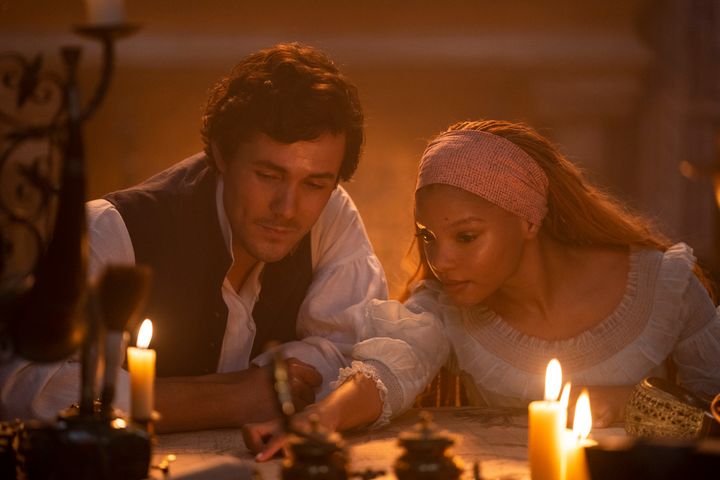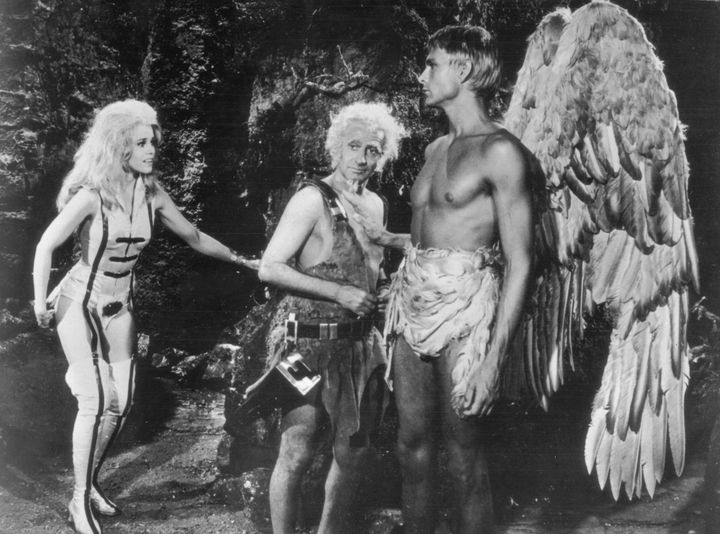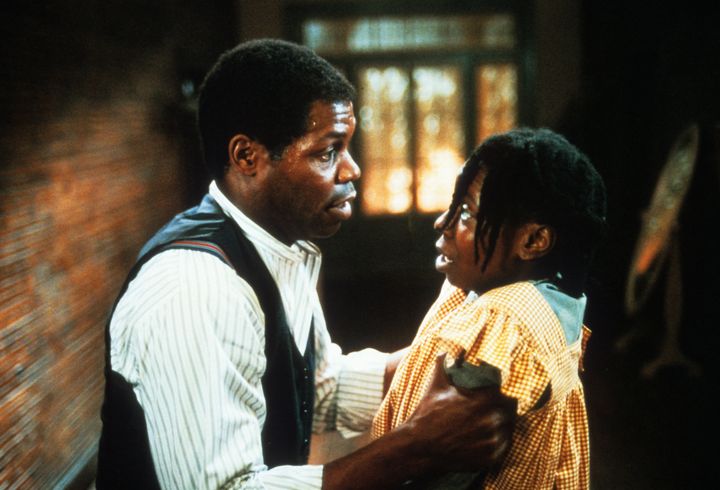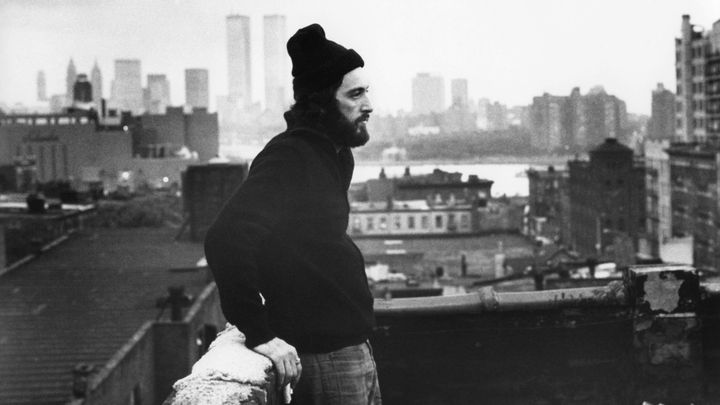Hollywood is putting a huge emphasis on remakes and trendy projects. But the purpose — and impact — of re-releasing older films deserves to be examined.
Sentimentality has never had a place in pop culture, which has always evolved at warped speed. Audiences today have a lot of options on what to watch, listen to, and read, and how to do so — too many, as some have said. Then there’s Hollywood’s constant, foolhardy task of peddling remakes of older films to fit the current social mores, in a race to be on the right side of history.
The surplus of art is so excessive that storytellers like Taika Waititi have resigned themselves to the belief that new content coming out now will be antiquated in as soon as a decade or two.
“No one’s going to remember us,” he told The Hollywood Reporter. “What’s the name of the director of ‘Casablanca’? Arguably one of the greatest films of all time. No one knows his name. Let’s just live, make some movies. They’ll be obsolete and irrelevant in 15 or 20 years.”
That’s bleak as hell. Though, sadly, not far from the truth. (And, if you’re wondering, Michael Curtiz directed “Casablanca.”)
Still, this begs an important question. What is to become of the practice of re-releasing and restoring older offerings like Park Chan-wook’s 2003 thriller “Oldboy,” returning to theaters this August, or 1997’s “Titanic,” which had its re-outing in January, so that they do stay relevant or can at least be studied and challenged?
How can re-releases thrive when some apparently feel these films no longer have significance?

This also comes to mind as we step into the summer season. Disney is celebrating its 100th anniversary by re-releasing eight of its classic films for two-week limited runs at theaters from July to October.
Cities like New York host screenings of older films as fun outdoor events, and theaters such as the Metrograph continue to curate and screen a robust variety of re-released and mostly restored vintage cinema.
Those coming up at the New York City theater include director Roger Vadim’s 1968 comedy “Barbarella,” Sidney Lumet’s 1973 drama “Serpico” and Ridley Scott’s 1982 action film “Blade Runner.”
But with greater attention and promotions around remakes and reimaginings than ever, like this year’s “The Little Mermaid,” “Teen Wolf: The Movie,” “White Men Can’t Jump” and the upcoming “The Color Purple,” it’s a wonder how the older counterparts can sustain interest. That’s particularly concerning when re-releases get far less marketing and reach fewer audiences.
Alexander Olch, founder of the Metrograph, isn’t especially concerned about competing with popular remakes, or even the presumed fading importance of showing re-releases and newly restored older films. Arthouse cinemas like his, he said, thrive by attracting a variety of audiences interested in both older and contemporary classics as well as unique filmmaking.
“There will never be a shortage of excitement around authenticity,” Olch told me over the phone. “So, the original of any idea is always going to be fascinating and of interest to, in our opinions, quite a large audience.”

He believes that watching an original film is the gateway to appreciating subsequent material.
“The interesting thing about watching the original is that it really is the cornerstone of any exploration of that idea — whether you’re looking at other work by that same filmmaker, by those same actors or artists, or potential remakes later on in time,” he said.
That’s fair. But re-releases still have to fit inside the Hollywood business model of making money. While they can’t be expected to compete with remakes at the box office (though recent re-releases of titles like “Jaws” and “Titanic” did quite well), it’s easy to presume that remakes’ overwhelming success could overshadow the efforts of a re-release.
Olch said there are more re-releases that defy that assumption than we may think, and that could be dependent on several factors, including the film itself. For instance, director Andrzej Żuławski’s 1981 horror “Possession” was a huge hit at Metrograph, both at the theater and on its website. Much of that is due to the built-in fan base around the title itself.
“Part of the reason it had such excitement is that many people had seen the film and they just wanted to see it again, which is a particular kind of interest and that ended up being a huge hit,” Olch said. “That’s just a film that invites repeat viewings and has a particularly avid fan base.”
But where do re-releases fit in today’s fast-paced culture?

It’s also worth pointing out that the cost to re-release a film is far less than bringing a new remake to theaters, in part because studios don’t have to worry about hiring a cast and crew.
Script supervisor Jennifer Carriere brought this up when we jumped on a separate call about the role of re-releases in today’s remake market.
“Consider that there are not those same production dollars going into re-releasing a classic film,” she said. “So, there is a cost benefit to re-releasing something without having to set aside another tens of millions of dollars to create something new. It’s something that already exists.”
So, when you think about it that way, continuing to re-release films is in the studios’ favor, making them a relatively lower financial risk that has the potential for a worthy return. It’s reliable. But whether reliable is good enough for some green-hungry studios remains debatable.
There’s another aspect of this: If you have a winning programming strategy, like at the Metrograph, you figure out a way to make some of these new remakes work to the advantage of a classic film re-release. For example, Olch’s team is sometimes inspired to pursue screening certain films because their forthcoming remakes could amplify excitement around the original version.
Carriere agreed that re-releases can play an important role in today’s remake culture. “It could be something that is laying the groundwork for a remake in the future, and they want to strengthen the fan base and even test the waters in terms of interest,” she explained.
But that doesn’t mean saturating the market.
“I just think it’s part of the risk,” Carriere continued. “But you do have to diversify when it comes to your content. So, you can’t have all remakes.”
And with original intellectual properties, “there is a place for re-releasing historic filmmaking pieces and getting audiences excited,” she added.

That balance and even the overwhelming number of remakes today, Olch said, “does not bear on what’s sitting in the archive.” But he also conceded it’s impossible not to consider the saturation of art and content that is current.
“Everything is so here and now that the opposite starts to become inevitably interesting,” Olch added, “which is something that is authentic that existed 10, 20, 30, 50 years ago that has a respect and a following of critics, or audiences, or filmmakers or artists.”
Something, he concluded, that even filmmakers today reference as art that has moved them.
But moviegoers’ interest in exploring older titles still seems rather niche. Audiences often lack a curiosity to explore deeper film history, even as specialty theaters curate older films around new pop culture dialogues.
These theaters, including Metrograph and others across the nation and the world, also offer artist callbacks and film series to introduce — and reintroduce — viewers to older content. And if audiences are unable to attend in person, some offer online viewing platforms that movie lovers can explore.
There’s also a whole other platform where older films can be found and, arguably most easily, accessed: streaming platforms.
How streaming classic films keeps film history alive.

In the same places where hits like “Succession,” “Yellowjackets” and “The Bear” are streamed, films such as 1989’s “The Little Mermaid” and 1985’s “The Color Purple” and “Teen Wolf,” as well as older classics including 1953’s “Roman Holiday” and 1963’s “The Birds,” can also be viewed.
Particularly in the aftermath of the Warner Bros. Discovery/TCM shake-up last month, cinephiles have been advocating to preserve these archival offerings. “Turner Classic Movies has been a fixture in my life for as long as I can remember,” actor Ryan Reynolds tweeted. “It’s a holy corner of film history — and a living, breathing library for an entire art form.”
Warner Bros. Discovery, which owns TCM, had previously laid off the network’s top execs. Then, following a significant outcry from fans worried that the losses at TCM could signal the loss of access to classic films in the vein of FilmStruck’s 2018 demise, the network reinstated TCM’s head of content and curation, Charlie Tabesh.
Filmmakers Steven Spielberg, Martin Scorsese, and Paul Thomas Anderson will also help guide programming and curation.
As passionate and necessary as that conversation has been, classics, particularly on streamers, are still largely overshadowed amid the flurry of excitement many audiences have about the most current title streaming.
That’s even true when it’s something bad, like “The Idol.” Many people refuse to explore the larger library on these platforms.
Even Carriere admitted to that. “Genuinely, I’m thinking about it myself, and it doesn’t even occur to me to go dig up older things,” she said. “I tend to just look at whatever is trending based on my preferences, and the streaming service itself tells me what that is.”

A lot of people share this habit. As Carriere mentioned, doing a little exploration on a streaming platform takes extra time out of your day and adds another task to it — a fun task, but a task nonetheless. That extra time should be worth it to explore your own interests beyond what is recommended.
Sadly, though, in today’s fast-paced culture, many social media chats underscore how everything new is cool. Even if it’s not actually cool, it’s still new.
Beyond many viewers’ general lack of curiosity, Carriere puts the onus on streamers. They don’t recommend older films to subscribers in the way they do the newer content.
Free platforms like Tubi, which is one of the best online platforms on which to watch classic movies apart from Criterion, a paid streamer exclusively dedicated to the archive, tend to do this a little better.
But paid platforms like Max, which also has a treasure trove of older work due to its TCM partnership, rarely promote classics, even if you frequently watch those titles. And the fear is that those films might become even more buried as the platform continues to roll out changes.
“Because it’s such a competitive landscape between the streaming platforms, they probably want to push and promote those things that are most likely to keep the subscribers subscribed,” Carriere said.

But if so many subscribers are only interested in what they’re told is interesting on the platform, the algorithm is counterintuitive.
That’s where the balance can come in, though. Not everything that appears on a streamer’s homepage has to be what is current, but rather it could also show films that are new to the platform — which should include the classics. This could help establish a routine of watching older films in tandem with their newer counterparts.
It could also build excitement around re-releases that shouldn’t have to shoulder that responsibility on their own. When the sentiment around original filmmaking is widely dismissive, it creates a challenge.
“So, while they do have these huge libraries of older content available, [unless] you explore the older content, I don’t see how they’re going to promote the older stuff, knowing that the vast majority of the audience is looking for the most recent releases above all,” Carriere said.
This could help explain why there is still so much older content that is not available to stream, beyond the ever-constant challenge of securing rights. Streamers don’t seem confident they’re going to perform well and are not interested enough to test them out. But really, it’s difficult to gauge performance when streamers rarely share viewership numbers, good or bad.
There’s also the concern over whether an older work “holds up” to today’s cultural standards, which could dictate whether something is promoted or even available on a streaming service and certainly whether it’s brought to the big screen again.
But that sometimes calls for discernment rather than dismissal, for the sake of film literacy in a landscape where audiences sometimes don’t even realize when a movie is a remake.
“I do think that there is a preserving film history aspect to it,” Carriere said. “We are building on a history of filmmaking, even though we don’t want to lean into celebrating regressive storytelling. But there is a place for preserving the film history and introducing classics to new audiences.”
The way we reexamine classic films deserves a discussion.

And focus groups, as Carriere suggested, could also help with determining whether a film should re-enter the cultural sphere in 2023. There’s obviously no need for something like, say, 1915’s “The Birth of a Nation” to repopulate today — though, that shouldn’t have emerged in 1915 either.
“Studios have to be careful about this and make sure that they’re vetting and testing and talking to [people] to decide whether or not it’s worthwhile to release something for fear of putting something out into the world that just doesn’t need to be seen or heard anymore,” she added.
True. Though it’s also worth distinguishing that not everything old is problematic, and not everything problematic is old. While today’s culture is quick to thoughtfully assess problematic contemporary works, it seems less interested in reexamining uncomfortable art from yesteryear with as much nuance. That doesn’t bode well for future re-releases.
But that concern could be challenged as the Writers Guild of America strike wages on, and audiences are faced with significantly fewer options in newer content — while the once-recent titles become a part of the archive just as quickly as they appeared. Will re-releases and archival titles on streamers get a viewership boost and/or stronger promotional strategies? That’s hard to predict.
Beyond that remains the issue of films being considered obsolete in a decade’s time. That sentiment means remakes are bound to happen, and whether they draw attention to the original film’s supplemental re-release or streaming availability doesn’t seem to be a priority for film studios that are shoveling out countless marketing dollars on the update.
Most of the streamers aren’t doing more to promote the archives either. So, the question of relevance persists, even when it’s something as recent as “Oldboy” or “Titanic.”

“To think that a performance is outdated in only a few years’ time is kind of a depressing thought,” Carriere said. “It would be nice if we could find ways to celebrate properties and performances and scripts and continue to keep them relevant.”
But she ultimately thinks that is a bit idealistic. “That’s just kind of going to be tougher to do, the shorter people’s attention spans become and the more competition for attention there is,” she continued. “That’s just part of the way in which our world is evolving. Yesterday’s news is yesterday very quickly.”
Shouldn’t we be more concerned about that? It’s not just that remakes of older films are dominating the conversation around the older film itself. It’s also that the rapidly evolving cultural landscape doesn’t allow much space for the archives to thrive on most mediums.
But Olch said audiences that are interested in experiencing these original films again, or even for the first time, usually seek out the opportunity to do so. And those who aren’t, well, don’t. Not everything is going to be for everyone and at all times. But we should still find a way to acknowledge and examine them while they are available, and often at our own fingertips.
“On a metaphysical level, I think all artists — we’re all building sandcastles and one day [they] are going to be washed away,” he said. “But the fun of it is to walk down the beach and admire everyone’s sandcastles while they’re standing.”
That sense of finiteness is where the work of re-releases becomes especially urgent, though.
“The nice thing about restorations is, in some ways,” Olch said, “it sort of holds the waves back a little longer before washing over the sandcastles.”
Credit: Source link